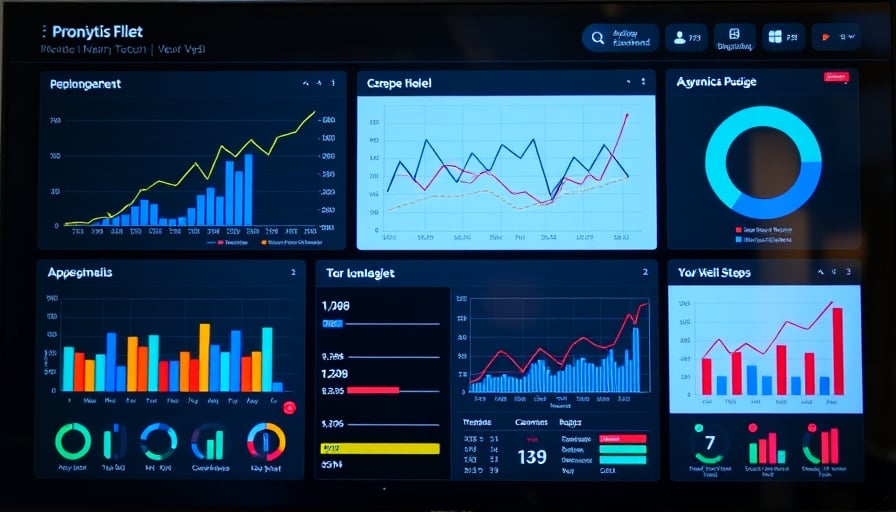MicroStrategy (MSTR) at a Crossroads: Credit Ratings, Market Sentiment, and the Pursuit of a $150 000 Bitcoin Target
MicroStrategy Inc. (MSTR), the high‑profile Bitcoin‑focused enterprise led by Michael Saylor, finds itself in a pivotal position as market dynamics shift and regulatory signals mature. The company’s latest financials—closing at $1.15651 on 28 Oct 2025—contrast starkly with its historic peak of $18.1671 on 22 Dec 2024, underscoring the volatility inherent in a firm whose balance sheet is dominated by a single cryptocurrency.
S&P’s Dual Narrative
In the early hours of 28 Oct, S&P Global Ratings downgraded MSTR to a junk‑bond B‑minus rating, citing the firm’s “heavy concentration in Bitcoin and weak dollar liquidity.” This downgrade places MSTR in the same speculative‑grade bracket as Sky Protocol, highlighting shared exposure to liquidity and market‑volatility risks.
Just a day later, however, the narrative shifts. S&P’s new credit rating—while still speculative—“opens Bitcoin to $130 trillion institutional capital,” according to Cryptoslate. The rating signals that, despite the concentration risk, MSTR’s Bitcoin holdings may now be viewed as a viable collateral asset for institutional investors seeking exposure to the cryptocurrency.
The duality of S&P’s stance reflects the broader market tension: the credit agency’s concern over concentration and liquidity is counterbalanced by an acknowledgment that a substantial Bitcoin reserve can act as a strategic asset in a diversified portfolio. For MSTR, this means that the company’s debt instruments may attract investors willing to accept higher risk in exchange for potential upside tied to Bitcoin’s price trajectory.
Analyst Bullishness on S&P 500 Inclusion
Amid this backdrop, 10x Research’s Markus Thielen publicly expressed optimism that MSTR’s upcoming Q3 earnings could reinvigorate expectations of an S&P 500 inclusion. Thielen noted that the company’s profitability on Bitcoin gains could shift sentiment, positioning MSTR as a more robust component of a major U.S. index.
Such inclusion would carry significant implications: index funds and ETFs tracking the S&P 500 would be compelled to hold MSTR, creating a steady demand catalyst. Moreover, index status often translates into enhanced liquidity and a perception of institutional legitimacy.
Michael Saylor’s $150 000 Vision
Despite the credit downgrade, Saylor remains unabashed in his long‑term bullish thesis. He publicly reiterated that Bitcoin “will grind its way to $150,000 this year,” a target echoed in Decrypt. This stance persists even after the recent dip from an all‑time high, reinforcing the company’s narrative that Bitcoin’s price will eventually surpass the threshold required to justify the firm’s treasury strategy.
Saylor’s public optimism serves two purposes: it galvanizes the firm’s shareholder base and signals to the market that MSTR is prepared to ride the bullish wave. The target, however, remains speculative and will hinge on broader macro‑economic factors, regulatory clarity, and the continued institutional appetite for Bitcoin.
The ETF and Treasury Debate
The rise of Bitcoin exchange‑traded funds (ETFs) and corporate treasuries has prompted mixed commentary. Trezor’s CEO, Matej Zak, described this development as a “double‑edged sword,” highlighting that while new capital inflows are beneficial, the lack of direct ownership dilutes Bitcoin’s core ideals. For MSTR, which positions itself as a steward of Bitcoin, this debate underscores the importance of maintaining a tangible, majority stake in the asset rather than merely exposing itself to derivative products.
Regulatory Momentum in Europe
Concurrently, a pro‑Bitcoin bill is poised to enter the French parliament, backed by the UDR party. The bill’s agenda includes the construction of a Bitcoin treasury and the expansion of euro‑based stablecoins. While the legislative process is still in its infancy, successful passage could create a regulatory environment that is more favorable to Bitcoin‑centric enterprises, potentially benefiting MSTR’s strategic positioning.
Forward‑Looking Assessment
- Credit Rating Dynamics – MSTR’s B‑minus rating signals a risk premium, but the acknowledgment of Bitcoin as collateral may attract risk‑tolerant institutional investors.
- Index Inclusion Potential – A move into the S&P 500 would solidify the firm’s institutional footing and generate consistent demand for its shares.
- Bitcoin Price Target – The $150 000 thesis remains a cornerstone of MSTR’s long‑term strategy, though achieving it will require macro‑economic tailwinds and sustained institutional demand.
- Regulatory Outlook – European legislative developments could ease market entry barriers and improve institutional confidence in Bitcoin‑backed securities.
In sum, MicroStrategy stands at an inflection point where credit ratings, analyst sentiment, and regulatory progress converge. Its ability to navigate the dual pressures of concentration risk and bullish opportunity will dictate its trajectory in the evolving landscape of institutional cryptocurrency exposure.
